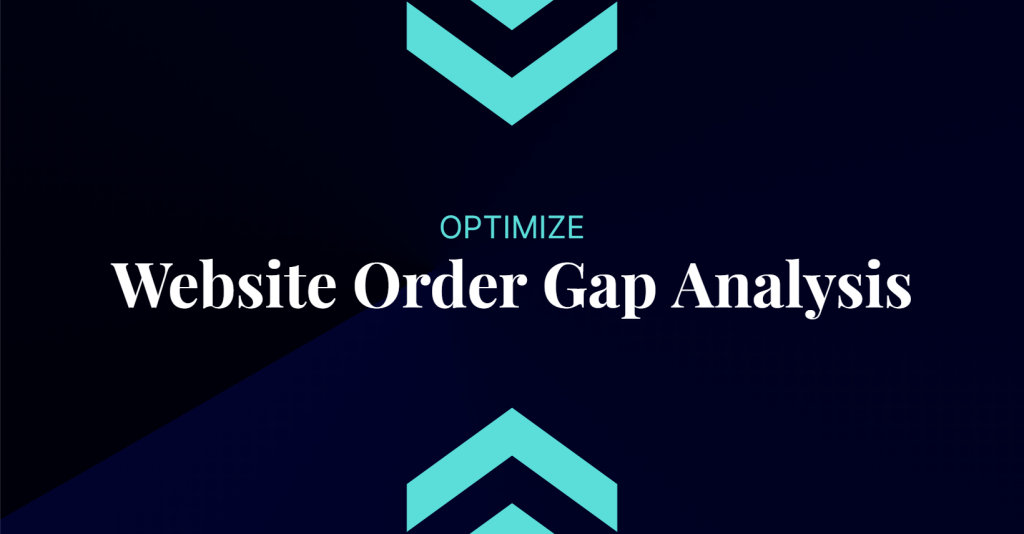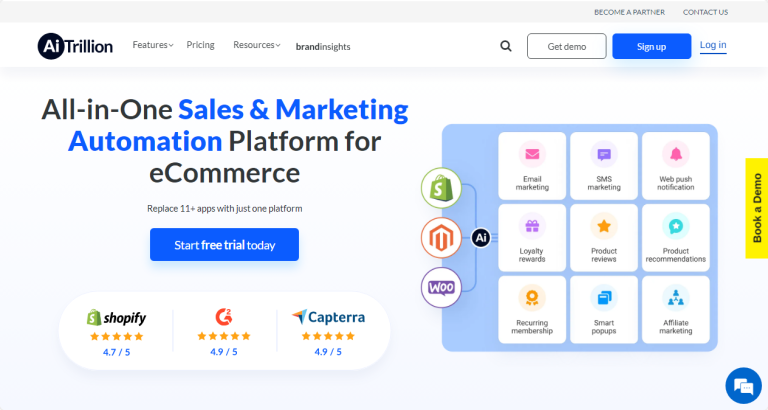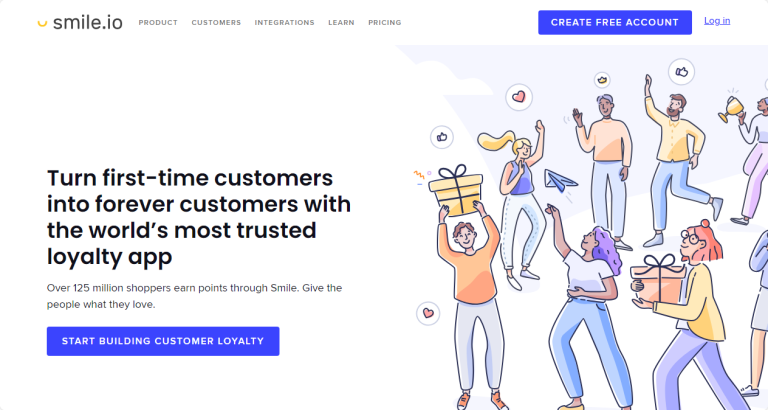Website Order Gap Analysis (OGA) is a key performance indicator (KPI) that measures the average time it takes for repeat customers to place a consecutive order on an ecommerce website.

By understanding OGA, e-commerce businesses can get a clearer picture of their customers’ buying frequency, enabling them to more effectively refine their marketing strategies, retention efforts, and promotional timelines.
Key Takeaways
- Definition: Website Order Gap Analysis (OGA) calculates the average time between successive orders from repeat customers on an e-commerce platform.
- Calculation: OGA is determined by dividing the number of days in the period by the number of purchases on the website.
- Strategic Importance: OGA insights enable e-commerce businesses to refine their marketing strategies, optimize inventory planning, and improve customer retention.
- Optimization Strategies: To reduce OGA, companies can improve customer engagement, implement loyalty programs, and optimize product assortments.
- Limitations: Website Order Gap Analysis may overlook browsing behavior, overestimate purchase intent for every visit, can be affected by website issues, fails to differentiate user segments, misses external influencing factors, depends heavily on traffic quality, can lead to prioritizing quantity over quality in conversions, and doesn’t deeply analyze reasons for non-conversion.
- Complementary Metrics: In addition to OGA, metrics such as purchase frequency, customer retention rate, and repeat customer rate provide deeper insight into customer buying habits.
Why does Website Order Gap Analysis matter for your business?
The insights drawn from OGA can be pivotal for an ecommerce operation due to several reasons:
-
Customer Retention: A shorter OGA indicates that customers are coming back to make purchases more frequently, a sign of higher customer loyalty and satisfaction.
- Marketing Strategy Refinement: By knowing the average time between orders, businesses can time their marketing campaigns, emails, or offers more precisely to motivate a repeat purchase.
- Inventory Planning: Understanding the OGA can help businesses predict when customers might return to repurchase certain items, aiding in efficient stock management.
- Customer Lifecycle Value Optimization: Recognizing the time frame in which customers usually reorder can enhance strategies to increase the customer’s overall spending in their lifecycle.
- Targeted Promotions: If there’s a longer gap between orders, businesses might consider offering special promotions or discounts to entice earlier repurchases.
How to calculate Website Order Gap Analysis (OGA)?
Explanation of the parts of the formula:
- Number of days in the period denotes the duration for which you are evaluating the OGA. This period could be any length of time, like a day, a week, a month, or even a year. Essentially, it’s the time frame you’re examining.
- Number of purchases on the website is the total number of orders that were successfully placed on the website during the specified period. This only counts completed transactions and does not include abandoned carts or failed transactions.
- The ratio that results from the division indicates the average number of days between consecutive orders made by repeat customers over the specified time frame.
- This average is crucial because it provides insight into how often repeat customers are making purchases, which can then be used to tailor marketing and inventory strategies.
In essence, the Website Order Gap Analysis (OGA) measures the average gap or duration between successive orders. A shorter gap typically indicates a higher frequency of purchasing by customers, while a longer gap might suggest that customers are taking more time between purchases.
Example Scenario
Imagine that:
- You are evaluating OGA over a span of 30 days (a month).
- During these 30 days, your website received a total of 600 orders from repeat customers.
Insert the numbers from the example scenario into the above formula:
- OGA = 30 days / 600 orders
- OGA = 0.05 days per order
- OGA = Approximately every 1.2 hours, a repeat customer places an order.
This indicates that, on average, every 1.2 hours a repeat customer places an order on the website during the 30-day period.
Tips and recommendations for reducing Website Order Gap Analysis
To optimize the average time between orders and encourage more frequent purchases, businesses can:
Improve customer engagement
Customer engagement is vital to any business, as it helps to build long-term relationships and encourage repeat purchases. One effective way to engage with customers is through regular newsletters. These newsletters can include information about the latest products, upcoming sales, or even helpful tips related to the product or service. Personalized recommendations can also be a powerful tool. By leveraging customer data, companies can provide tailored product suggestions that are based on individual preferences and shopping behavior, increasing the likelihood of repeat purchases. Finally, timely notifications of new arrivals or restocks of popular items can create a sense of urgency that encourages repeat purchases.
Implement loyalty programs
Loyalty programs can be an important driver of repeat purchases. By offering reward points for each purchase, companies can encourage customers to shop more often to earn points and rewards. Exclusive offers and discounts for loyalty program members can also be beneficial in encouraging more frequent purchases. These exclusive benefits create a sense of exclusivity and make customers feel valued and appreciated, which can lead to increased brand loyalty and repeat purchases.
Optimize product assortment
To keep customers interested and coming back for more, companies should regularly update their product offerings. This means not only adding new products, but also taking seasonal changes, current trends, and customer feedback into account when curating the product assortment. By continually offering new and interesting items, businesses can ensure that customers will find something appealing each time they visit, encouraging more frequent purchases.
Implementing Subscription Models
Subscription models are a great way to encourage regular orders. For products that are used consistently, such as skin care or groceries, businesses can offer subscription boxes or auto-replenishment options. This not only provides convenience for the customer, but also guarantees a steady stream of orders for the business. Offering discounts or perks for subscribing can further incentivize customers to choose these recurring orders.
Get feedback and improve
Customer feedback is a critical element in improving business operations and increasing sales. By actively seeking feedback from customers, businesses can identify any problems or areas for improvement in their product or service. They can then make the necessary adjustments to address these concerns, resulting in a better shopping experience for customers. This positive experience can lead to increased customer satisfaction and loyalty, encouraging more frequent purchases in the future.
Examples of use
Subscription-Based Models
- Scenario: An online tea seller observes a consistent OGA of around 45 days.
- Use Case Application: The seller can introduce a subscription box that delivers a variety of teas every 30 days, potentially reducing the OGA as customers receive products automatically without needing to reorder manually.
Referral Programs
- Scenario: A fashion ecommerce platform wants to reduce its OGA and increase customer acquisition.
- Use Case Application: By introducing a referral program where existing customers get discounts for referring friends, the brand can potentially see both a surge in new customers and more frequent orders from existing ones, as they utilize their referral discounts.
Loyalty Programs
- Scenario: A beauty products e-commerce store notices that once customers buy a product, they tend not to return for several months.
- Use Case Application: To incentivize more frequent purchasing and engagement, the store could introduce a loyalty program. Points could be awarded for each purchase, and once a certain number of points are accumulated, customers can redeem them for discounts or exclusive products. As customers are motivated to earn and use their points, this could reduce the OGA.
Bundling Products
- Scenario: An online bookstore sees a large OGA, where customers typically purchase a book and don’t return for a considerable period.
- Use Case Application: To encourage customers to buy more frequently, the bookstore can offer bundles of books at a discounted rate. For instance, if a customer buys a novel, they might be offered a discount if they purchase the next two books in the series as part of a bundle. This can lead to increased sales and reduced OGA as customers are motivated by the value proposition of the bundle.
Seasonal Promotions
- Scenario: An online gardening supplies store notices that customers mainly buy during the spring, leading to a significant OGA during the rest of the year.
- Use Case Application: To stimulate purchases throughout the year, the store can introduce seasonal promotions. For example, during the fall, they could offer discounts on tools and bulbs suitable for planting during that season. During the winter, they could promote indoor gardening kits or holiday-themed plant decor. By aligning promotions with seasonal needs and interests, the store can attract more frequent purchases and decrease the OGA.
Website Order Gap Analysis SMART goal example
Specific – Identify and address a 15% order gap (from a projected 1,000 orders per month down to an actual 850) to achieve the target of 1,000 orders monthly.
Measurable – The order gap will be quantified monthly by comparing the projected number of orders against the actual orders received. This will be tracked using the eCommerce analytics platform.
Achievable – Yes, by conducting a comprehensive analysis of the customer journey on the website to identify drop-off points, revisiting marketing campaigns to ensure they are targeting the right audience, and optimizing the checkout process to reduce friction for customers.
Relevant – Yes. Closing the order gap is vital for achieving the projected revenue and ensuring the efficiency of marketing spend. This aligns with the monthly and quarterly objectives of reaching sales targets.
Timed – Within a period of three months, starting from the initiation of the gap analysis.
Limitations of using Website Order Gap Analysis
While Website Order Gap Analysis (often used to identify the difference between potential orders based on website traffic and actual orders placed) is a valuable KPI for identifying missed opportunities in ecommerce, it also has its limitations:
- Doesn’t Account for Browsing Behavior: Many visitors browse online stores without the intention to purchase immediately. They might be researching, comparing, or even window shopping. Therefore, a gap between potential and actual orders might be overemphasized.
- Assumes Every Visit Should Result in a Purchase: Not every website visit translates to a buying intention. Some visitors might land on the website accidentally or might be looking for contact information, reviews, or other non-purchase related details.
- Can Be Influenced by Website Issues: A large gap can be attributed to website problems, such as broken links, slow loading times, or unresponsive design. However, fixing these might not necessarily result in the expected increase in orders.
- Doesn’t Differentiate Between Different User Segments: Not all visitors have the same buying potential. Some might be first-time visitors, while others might be returning. The analysis doesn’t differentiate these segments, which can be critical in understanding the buying behavior.
- No Insight into External Factors: External factors like market trends, economic downturns, or global events can influence buying decisions. The gap analysis might not account for these, leading to skewed interpretations.
- Dependent on Traffic Quality: If a website gets a lot of low-quality traffic, such as from irrelevant sources or non-targeted advertising, the gap will naturally be larger. This doesn’t necessarily reflect the website’s conversion effectiveness.
- Overemphasis Can Neglect Conversion Quality: Focusing too much on closing the order gap might lead to aggressive marketing tactics, which could result in lower-quality conversions or a high rate of returned orders.
- Lacks Depth in User Behavior Analysis: The gap analysis might indicate a missed opportunity, but it doesn’t provide deeper insights into why users didn’t convert. Was it the pricing, product range, website design, or something else? Without this context, actionable steps might be unclear.
In conclusion, while Website Order Gap Analysis can highlight areas of potential revenue, it’s important to interpret the results with caution and consider other KPIs and qualitative data. Relying solely on this metric could lead to misguided strategies and missed nuances in user behavior.
KPIs and metrics relevant to Website Order Gap Analysis
-
Purchase Frequency: This measures how often customers come back to make a purchase within a specific timeframe. It’s closely related to OGA, but focuses more on the number of purchases than the time between them.
- Customer Retention Rate: This metric shows the percentage of customers who continue to buy from the ecommerce store over a given period.
- Repeat Customer Rate: Represents the percentage of customers who have shopped more than once.
By analyzing the OGA alongside these metrics, businesses can get a deeper insight into their customers’ purchasing habits and tailor their strategies accordingly.
Final thoughts
Website Order Gap Analysis (OGA) is a critical tool for e-commerce businesses to measure the average time between successive orders. This metric can provide invaluable insight into customer buying habits, allowing businesses to fine-tune their strategies, improve customer retention, and ultimately increase revenue.
Website Order Gap Analysis (OGA) FAQ
What is Website Order Gap Analysis (OGA)?
OGA is a metric that calculates the average time taken by repeat customers to place another order on an ecommerce platform.
How can OGA insights help my business?
OGA provides data on purchasing frequency, allowing businesses to refine marketing campaigns, inventory management, and promotional activities for better customer retention and increased sales.
What can a longer OGA indicate?
A longer OGA can suggest lower customer retention, possible dissatisfaction, or the need for improved marketing efforts to entice repeat purchases.
How can I improve my OGA?
Strategies such as enhancing customer engagement, introducing loyalty programs, and optimizing product assortment can lead to a reduced OGA.
Is a shorter OGA always better?
While a shorter OGA often indicates frequent purchases and higher customer loyalty, it’s essential to balance it with the quality of customer experience and profitability. Too frequent orders might mean customers aren’t buying in bulk or are only engaging during heavy discounts.


